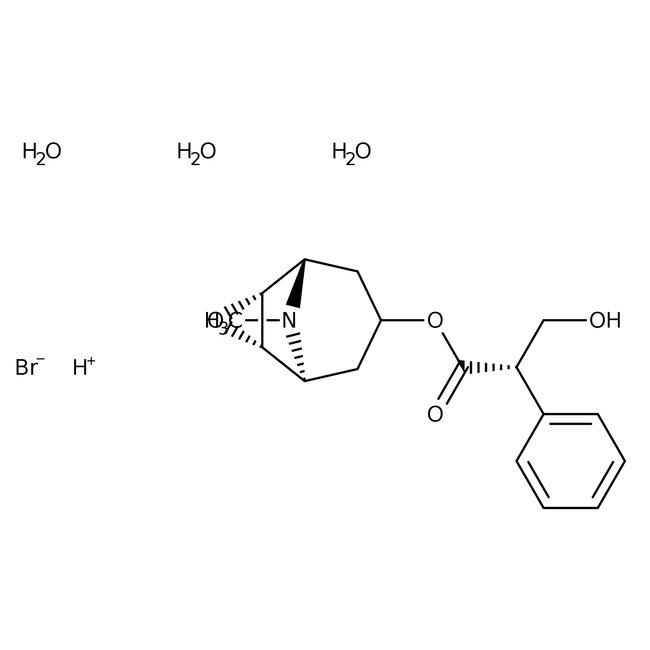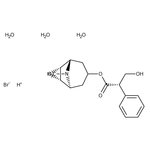Search Thermo Fisher Scientific
Scopolamine hydrobromide trihydrate, 99%
Fatal if inhaled.
Fatal if swallowed.
Fatal in contact with skin.
General Information
• Scopolamine hydrobromide trihydrate is a salt form of scopolamine, a tropane alkaloid derived from plants of the nightshade family (Solanaceae), mainly Hyoscyamus niger and Atropa belladonna
• Scopolamine hydrobromide trihydrate, demonstrates competitive anti-muscarinic activity blocking the actions of endogenous acetylcholine or exogenous agonists
• It also shows anti-spasmodic and anti-emetic activities
Applications
• It has been described that scopolamine inhibits muscarinic acetylcholine receptors (mAChRs) with some selectivity for M1 mAChRs
• It is structurally similar to acetylcholine and can antagonize acetylcholine activity mediated by muscarinic receptors located on structures innervated by postganglionic cholinergic nerves and on smooth muscles (that respond to acetylcholine but lack cholinergic innervation)
• Scopolamine hydrobromide trihydrate can induce amnesia in laboratory animals and so it is frequently used in animal models of memory deficit
• Scopolamine hydrobromide trihydrate is used to induce cognitive deficits in animal models of Alzheimer’s disease
• Scopolamine, has been employed in several studies to understand, identify, and characterize biological targets for Alzheimer's disease
General References:
- Saikia, B.; Barua, c.; Sarma, J. Zanthoxylum alatum ameliorates scopolamine-induced amnesia in rats: Behavioral, biochemical, and molecular evidence. Indian J Pharmacol. 2018, 50, (1), 30–38.
- Devore, S.; Almeida,L.; Linster, C. Distinct Roles of Bulbar Muscarinic and Nicotinic Receptors in Olfactory Discrimination Learning. J Neurosci. 2014, 34, (34), 11244–11260.
- Venkatesan, R.; Subedi, L. Yeo, E.; Kim, S. Lactucopicrin ameliorates oxidative stress mediated by scopolamine-induced neurotoxicity through activation of the NRF2 pathway. Neurochem Int. 2016, 99, 133-146.
- Appenroth, D.; Decker, M.; Tränkle, C.; Mohr, K.; Lehmann, J.; Fleck, C. In vivo investigations on the cholinesterase-inhibiting effects of tricyclic quinazolinimines: Scopolamine-induced cognitive impairments in rats are attenuated at low dosage and reinforced at higher dosage. Pflügers Archiv - European Journal of Physiology. 2008, 455, 895–901.



